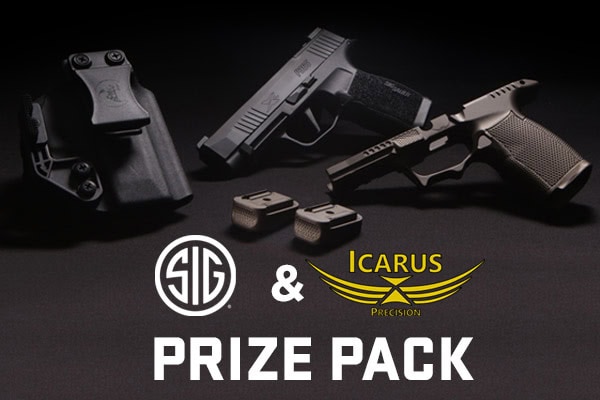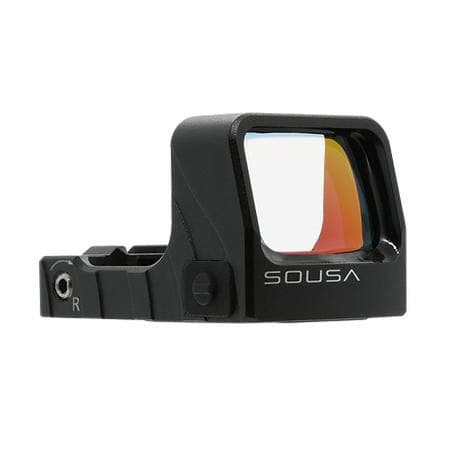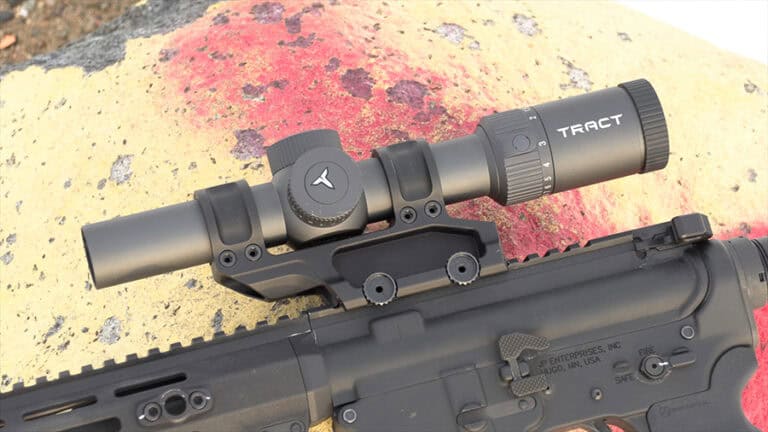TAG Precision—American-made RMR Plate for Kimber
For users of optics-ready Kimber 1911 and 2K11 pistols, TAG Precision has announced…
For users of optics-ready Kimber 1911 and 2K11 pistols, TAG Precision has announced…
Fountain Valley, CA—SureFire, LLC, manufacturer of the world’s finest—and most innovative—illumination tools and…
Shinenyx—creators of a cutting-edge fusion of digital night vision and thermal imaging technology—has…
All shooting is a balance between speed and precision. By that I mean you can…
The Mod-Navy Qual I’ve been doing this qual (or drill, or whatever the current nom…
• Built for road trips and off-road use• Manual transmission equipped• Wrapped in MultiCam Arctic…
The Soviets managed to produce some outstanding tanks during World War II: the T-34/85 (a later variant of the original T-34/76 mounting an 85mm main gun), the ugly but devastatingly brutish KV-2 (mounting a 152mm main gun, the largest ever mounted to a production tank), the IS-3 (named for Josef—Iosef in Russian—Stalin and mounting a nasty 122mm main gun), and tank destroyers like the SU-100 (with its distinctive sloped armor, readily identifiable on both the SU-85 and SU-100 variants). Sure, the Germans built some really outstanding tanks, but they didn’t build nearly enough.
Cold War-era Soviet tanks were capable enough, and certainly built in large numbers, but they suffered from some key design flaws. One of the most significant stemmed from the Soviet designers’ desire to give their tanks a low profile on the battlefield: in order to function with a crew of three instead of the four typical in Western tanks, they replaced the loader with an automatic loading mechanism. These autoloaders had some reliability issues and at the end of the day just weren’t as fast as a human loader. That is something that has not changed in the T-90, though it claims a rate of fire of 6-8 rounds per minute, but it’s still an impressive armored vehicle.
Entering service in 1992—just after the collapse of the Soviet Union, but designed prior to its fall—the T-90 Main Battle Tank features the 125mm main gun long favored on Soviet tanks. It is capable of firing armor piercing fin-stabilized discarding sabot (APFSDS), high explosive anti-tank (HEAT), high explosive fragmentation (HE-FRAG), and the 9M119 or 9M119M Refleks anti-tank missiles (designated the AT-11 Sniper by NATO). The Refleks is a semi-automated laser beamrider with a 5 km range intended for use against helicopters and tanks with reactive armor. As with most main battle tanks, it also mounts a 12.7mm (equivalent to the U.S. .50-caliber) heavy machine gun and a coaxial 7.62mm PKT medium machine gun.
The T-90 can mount reactive armor and employs the Shtora-1 defensive suite, which includes an infrared jammer, a laser threat receiver and warning system, and an aerosol screen grenade discharger all under computer control. It also has a full chemical, biological, radiation, and nuclear (CBRN) protection system.
The fire control system offers both day and thermal imaging with laser rangefinding and missile guidance, stabilization, wind gauge, and ballistic computer. The TO1-KO1 thermal sight can identify targets out to 1.2 to 1.5 km.
The tank’s V-12 piston engine produces 840 hp. With a weight of approximately 46.5 tons, this results in a less-than-spectacular power-to-weight ratio of 18.06 hp per ton.
Good information on exactly how many T-90 MBTs the Russian Army currently has in service is hard to come by. The best estimate was about 334 as of 2007, with 31 projected to enter service in 2007 and 60 in 2008, with production running about 31 tanks (one battalion) annually since then.
An export model, the T-90S, has been sold extensively to India, and Saudi Arabia ordered 150 in 2009. This will create the unusual (and unprecedented) situation of the Russian T-90 and the U.S. M1 Abrams serving side-by-side in the same army.
Guns & Tactics is an online media outlet that focuses on the firearms community, not just firearms and gear but also quality training, technical break downs and enlightening presentations.

Now through March 14, 2022, enter for a chance to win this amazing prize pack from SIG SAUER and Icarus Precision valued at $1,199.00!

SOUSA® Optics introduces the DARC™ Micro Pistol Dot sight. DARC stands for “Discrete Advanced Reflex Concealment”.
Remembering the fallen warriors who have served our communities is an important part of patriotism in any country. In North America and the greater Commonwealth of Nations, two…
[dcs_post_top] [dcs_fancy_header bgcolor=”#ffffff” color=”#000000″ fweight=”bold”]The new action film series from Costa Media Group featuring firearms and tactical products from leading manufacturers.[/dcs_fancy_header] [dcs_thinspliter size=”medium”] Chris Costa has recently embarked…

Dave got a chance to check out the just announced 1-8 LPVO from Tract Optics. This 1-8 is a great addition to the LPVO market.
[dcs_img_right framed=”black” w=”225″ h=”115″] http://gunsandtactics.wpengine.com/wp-content/uploads/2012/04/eurosatory.jpg [/dcs_img_right] The Land and Airland Defence and Security international exhibition took place at the Paris Nord Villepinte exhibition center in France on June…
© 2025 UN12 Magazine
© 2025 UN12 Magazine
Wait! Don’t forget to